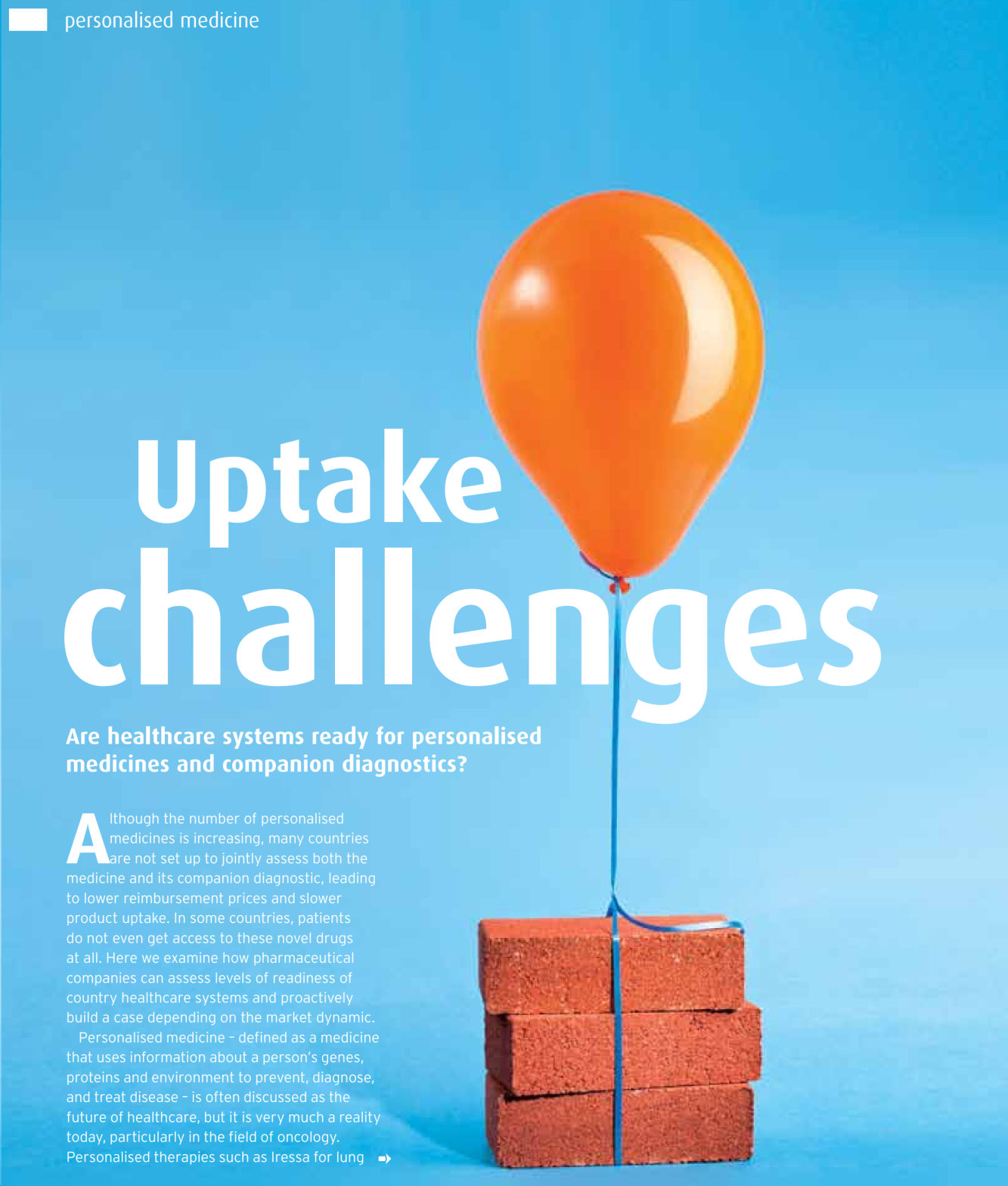Although the number of personalised medicines is increasing, many countries are not set up to jointly assess both the medicine and its companion diagnostic, leading to lower reimbursement prices and slower product uptake. In some countries, patients do not even get access to these novel drugs at all. Here we examine how pharmaceutical companies can assess levels of readiness of country healthcare systems and proactively build a case depending on the market dynamic. Personalised medicine – defined as a medicine that uses information about a person’s genes, proteins and environment to prevent, diagnose, and treat disease – is often discussed as the future of healthcare, but it is very much a reality today, particularly in the field of oncology.
Diagnostics are largely unheralded compared to medicines, but personalised medicine is entirely reliant on companion diagnostics. The original and arguably still most compelling application of diagnostics in this field is efficacy-based patient stratification (eg testing patients for HER2 gene amplification to gauge their suitability for Herceptin). In addition, safety-based patient stratification (eg testing for the JC virus to assess risk of progressive multifocal leukoencelopathy in multiple sclerosis patients prescribed Tysabri) or ongoing monitoring to assess treatment strategy (eg measuring peripheral blood BCR-ABL transcript levels in patients on Glivec to identify patients likely to achieve better long-term outcome if they are switched early to second-line therapy) have also demonstrated their practical merits.
Most healthcare systems have no holistic approach to assessing personalised medicines. While there are on-the-ground challenges in terms of implementation of personalised medicine – such as low widespread availability of ‘-omics’ tests, gaps in physician knowledge and issues with data collection and sharing – the case for personalised medicine is compelling for all stakeholders. For patients, personalised medicines mean better outcomes and improved confidence; for healthcare professionals, improved predictability of outcome; for policy makers they inform guidelines and policy; for payers, they mean improved cost-effectiveness leading to long-term sustainability of healthcare systems, while for the pharmaceutical industry, they come with a ready-made case for market access with a compelling cost-effectiveness argument.
But despite all this, many healthcare systems across Europe are not set up to manage the drugs and their companion diagnostics in the holistic manner so essential to their success. One issue is that current healthcare models are organ, system or disease-oriented, but personalised medicines do not necessarily fit into these definitions, requiring a focus on biological pathways and unravelling the differences between healthy and diseased conditions.
Another issue is a degree of scepticism among payers and policy makers, that manufacturers use personalised medicine to disguise higher pricing. They may also be sceptical of unfamiliar clinical data evidence used to justify economic value. But perhaps the most fundamental issue is a lack of holistic view within healthcare regulatory systems. Current systems largely consider drugs and diagnostics via separate evaluation and payment processes; this can lead to significant challenges, such as successful reimbursement of the drug but not its companion diagnostic, or vice versa.
Although personalised medicine represents a positive development for all stakeholders, many healthcare systems across Europe are not set up to evaluate treatments and their companion diagnostics in the holistic manner so essential to their success. Hence, pharmaceutical companies and diagnostics producers need to collaborate tightly to generate the necessary evidence and obtain adequate reimbursement. It is therefore important to assess individual markets early enough before submission and identify potential entry strategies which will maximise the chance of market access.

